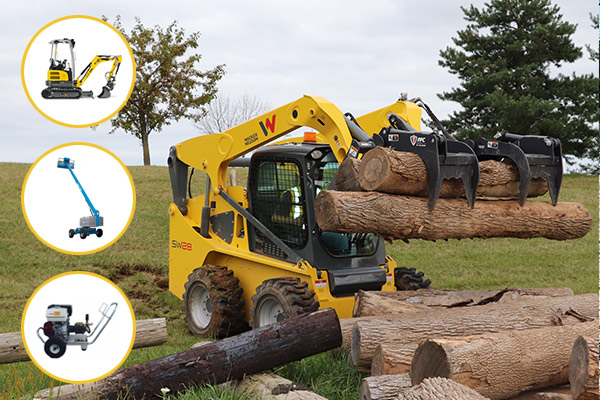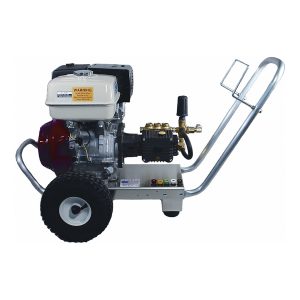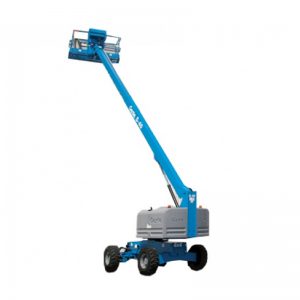
Fall is a great time to get ahead of next year’s goals with landscaping and hardscaping projects. The mild weather makes for comfortable working conditions, and the soil stays evenly hydrated when conducting earth-moving tasks. Savvy contractors know that they can usually pick up a significant amount of work in the fall—including large-scale commercial jobs—keeping them busy well into the first frost.
But to keep up with that workload and maximize profits, you’ll often need a few extra tools that you wouldn’t necessarily use all year round. On top of purchasing the kind of general equipment most landscapers need, a smart way to beef up your arsenal for these fall jobs is to consider landscaping equipment rentals. Alternately, while it may be smart for you to own one set of bigger equipment, there are times you’re working with an expanded crew—and need more equipment, albeit only temporarily.
Good equipment rental companies, like Diamond tool, won’t just have the best tools at your disposal, they’ll be able to help you select the right equipment for the task at hand as well as assist you on how to use it. They’ll also have the simpler tools you’ll need on hand to purchase, making it a lot easier to get tasks done quickly and correctly. Let’s take a closer look at the four common fall landscaping tasks, as well as the best landscaping equipment rentals and tools for each one, so you and your team are ready for the season.
Sidewalk and Deck Cleaning
A lot of fall landscaping boils down to basic maintenance and cleaning. This typically means moving and removing a lot of leaves and branches, so leaf blowers and rakes are a must-have for any contractor. But it’s amazing how much dirt, grime, mildew, and/or moss outdoor surfaces can build up on hard surfaces over the course of a year. To reduce the amount of time involved in cleaning sidewalks, retaining walls, and decks, you’re going to need a pressure washer.
 We all know a pressure washer can make quick work of what would otherwise be a slow-going task. But there’s also a good chance you don’t need one day-to-day, which can make renting one a smarter option than investing in purchasing one.
We all know a pressure washer can make quick work of what would otherwise be a slow-going task. But there’s also a good chance you don’t need one day-to-day, which can make renting one a smarter option than investing in purchasing one.
Keep in mind, if you’re renting, it makes good sense to brush up on pressure washer safety. These are powerful machines that can cause serious damage—both to your project and to yourself—if you’re not careful.
There are two key factors at play that help create a pressure washer’s strength: the angle of the nozzle’s spray and the PSI of the washer itself. Generally speaking, the wider the spray tip, the safer it will be, since the pressure will be spread out over a greater area. If you’re washing a softer, more delicate or malleable surface, like a wooden deck, you should always employ a spray tip with a 40 to 60 degree spread. Likewise, these softer materials might require using a PSI of 600 or less.
Hard materials like brick and concrete can withstand far more force and should be fine at pressures up to around 3000 psi. Even then, however, you may damage the surface if your tip is too narrow, or if the surface is already somewhat damaged or degraded. As a rule of thumb, always start off at the lowest pressure, then slowly work way up until you find the ideal setting.
Tree Trimming
Tree trimming is another common fall landscaping task. For simpler jobs, you’ll need trimmers and perhaps a simple chainsaw and ladder, something that every landscaper should own. But for larger trees, even if you have experienced tree climbers in your crew, relying solely on ladders can be risky business. And if there are large numbers of trees to trim, this will eat into a significant portion of your time. Here’s where an equipment rental company comes in handy. They often have aerial lifts at the ready for your job, no matter how big or small.
 Aerial lifts come in a variety of different styles and sizes, and include all of the following specialized types:
Aerial lifts come in a variety of different styles and sizes, and include all of the following specialized types:
- Work platforms
- Scissor lifts
- Material lifts
- Tow-behind lifts
- Boom lifts — telescoping
- Boom lifts — articulating
Remember, not all of these lift types make a good choice for tree trimming. Most contractors prefer using either articulating or telescoping boom lifts. Both types of boom lifts have baskets in which the worker stands for optimal safety. They both also offer the ability to maneuver both vertically and horizontally, which is a key feature for accessing awkwardly located tree branches.
Earth-Moving Landscape Projects
More ambitious building owners and property managers often choose to take on more intensive landscaping projects in the fall. This is smart timing because it means that the landscaping will be prepped and ready for spring plantings—when your clients are eager to begin using their space. These projects may involve the installation of new planting beds, landscaping berms, or even decorative ponds. But these kinds of projects almost invariably require excavating and/or moving large volumes of soil.
When the job is small, all you may need are some good, sturdy shovels. But the bigger the job, the bigger the equipment. The good news is, while more intensive landscaping projects may require the power only a full-size excavator and/or backhoe can provide, the majority of fall landscaping jobs can be tackled with skid steer rentals. Why? Skid steers offer three key advantages.
To begin with, skid steers have a much more compact size, meaning they can maneuver in tighter spaces. They also often weigh significantly less than full-sized construction equipment. As a result, skid steers pose less risk to both above and below ground features, including planting beds and utility lines.
The second key advantage of skid steer rentals has to do with their attachment versatility. Whereas other types of landscaping equipment rentals have only one type of fixed attachment, a skid steer can wear many different hats. A skid steer can easily accommodate all of the following types of attachments:
Finally, skid steer rentals have the advantage of operational safety. Because of their smaller size, operators can enjoy a far greater range of vision than when operating full-sized construction equipment. The controls on skid steers also tend to be more intuitive, with a simple joystick used to control the movement of the machine.
Hardscaping Upgrades
Fall also marks a great time to undertake hardscaping projects like installing retaining walls, patios, and walkways. In many such projects, some degree of excavation is required. All landscapers should own simple hand tampers, mallets, and brooms. Yet hardscaping projects also involve another important element: compacting the sub-base prior to the installation of structural elements.
No matter how level your building surface may be, the long-term stability of the structure will suffer if the soil is not properly compacted. The soil compaction process eliminates air pockets in the soil, thus boosting the soil’s density and making it less likely to shift, heave, or buckle as time goes on.
A good landscaping tool rental company should offer several different varieties of compaction equipment to choose from, with the four most common being:
Backfill tampers tend to be somewhat specialized pieces of equipment. While they can generate large amounts of force, their small heads make them most useful for filling holes and packing small areas of soil. Rammers have slightly larger compaction heads and may prove more useful when installing hardscaping with a narrow footprint — for instance, a thin retaining wall.
Plate compactors tend to be the most useful landscaping tool rental for installing walkways and patios, since they can cover a wider area while ensuring even compaction rates. For especially large-scale projects, it may be more sensible to rent a roller, which will be able to cover the most amount of ground in the shortest time.
Landscaping equipment rentals offer a cost-effective way to handle seasonal tasks, as compared to buying equipment you might not need for most of the year. Of course, not all equipment rental companies offer the same level of expertise or take care of their machines with the same degree of scrutiny. To get the very best equipment for your fall projects, make sure you partner with equipment rental companies that have the most current equipment, and that it’s properly serviced and maintained.
*******************************************
Get to know the full line of rental equipment today at Diamond Tool. Questions? Our equipment rental and sales team will be happy to help!
Contact our experienced sales team – either by phone 888-879-3426 or email – and let us help you get the right landscaping equipment rentals for your next job.


